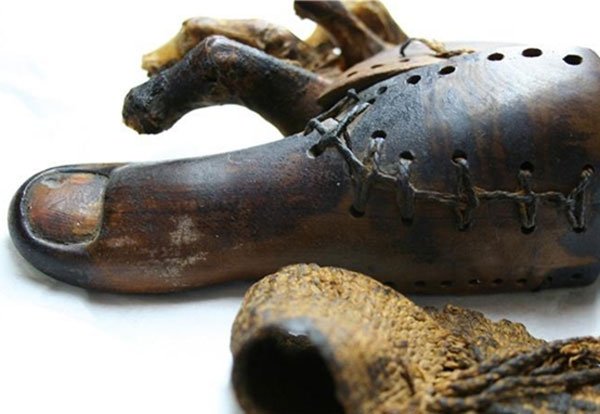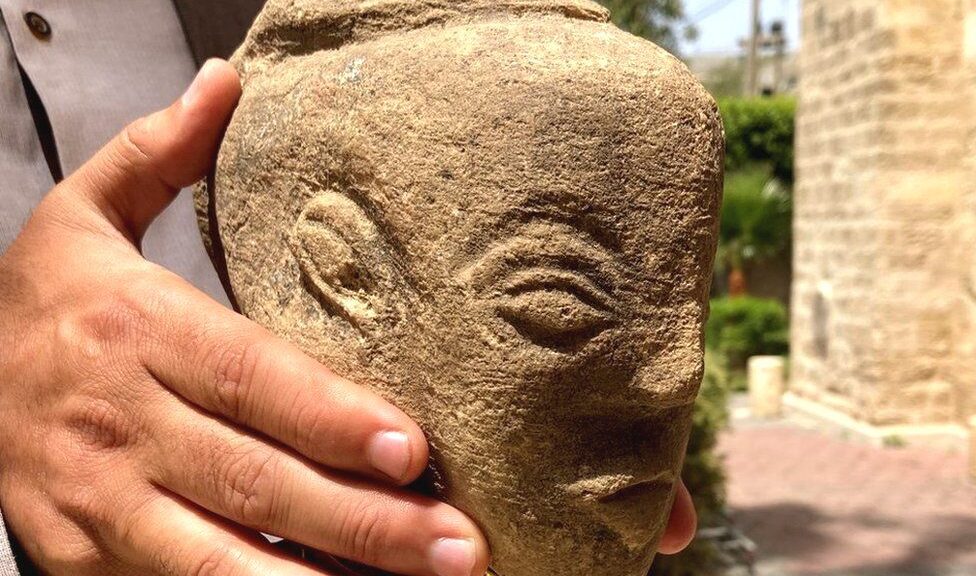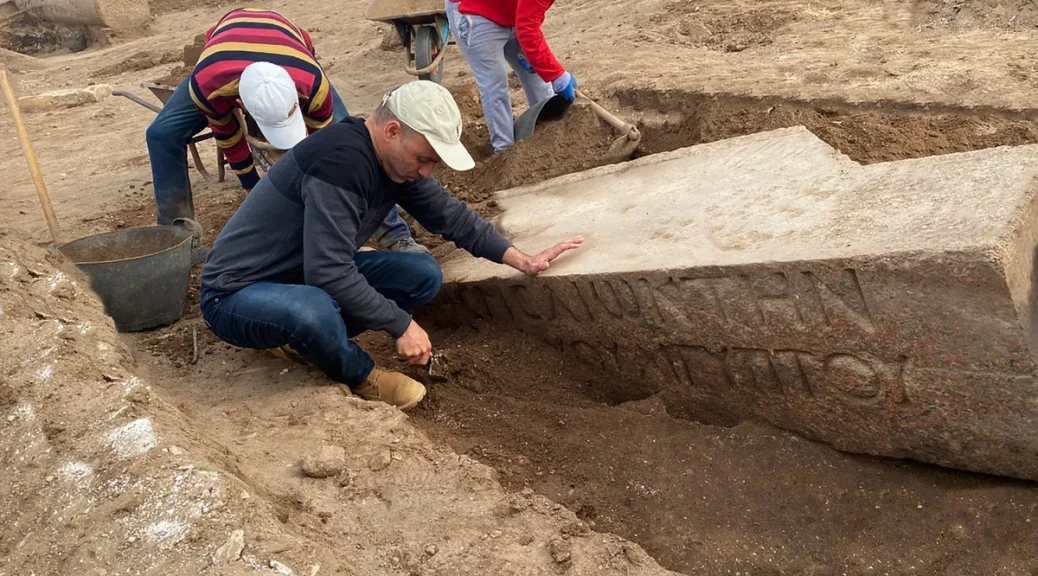Egyptian Light Bulb: What You Need To Know To Separate Fact From Fiction

A wall inscription in the Temple of Hathor at Dendera seemingly depicts an ancient Egyptian light bulb which some interpret as evidence that the Egyptians had electricity. It has been suggested that the inscriptions resemble a Crookes Tube, an experimental electrical discharge tube invented in the 19th century. Archaeologists and Egyptologists have dismissed these claims as fiction but the Dendera light continues to spark curiosity. We will embark on a journey to the ancient past to separate truth from myth and explain the origin and history of the so-called Dendera light.

Dendera Light: What Does It Mean?
The temple complex at Dendera in Upper Egypt was the cult centre of Hathor, the ancient Egyptian goddess of the sky, fertility, women, and the mother of the sun god Ra. An inscription on a stone relief located in an underground passageway beneath the main temple has been a source of controversy for several decades. Pseudohistorians have interpreted the inscription, otherwise known as the Dendera light bulb, as evidence that the ancient Egyptian possessed knowledge of electricity and actually had electric lights. Their theory has been dismissed by archaeologists and Egyptologists who maintain that the carving is a depiction of an Egyptian creation myth.
– Pseudohistorians Claim the Carving Depicts an Ancient Light Bulb
At first glance, the inscription appears to resemble an elongated bulb and a wavy line inside that looks like a wire. The ‘wire’ leads to a small box on which we see a deity kneeling. Next to the bulb, we see two-armed Djed pillars connected to the wire-like object in the middle and a baboon armed with two knives.
According to the Swiss pseudo-archaeologists and novelist Erich Von Daniken, the carving represents a light bulb. He and other non-mainstream historians interpret it as proof of the existence of electrical lighting in Ancient Egypt. Daniken goes even further and suggests the snake served as a filament and the Djed pillar as an insulator while the tube itself was an ancient light bulb. The baboon is interpreted as a guardian who makes sure the device is not misused.
– It’s Not a Light Bulb, But a Scene From One of the Oldest Egyptian Myths, Egyptologists Say
Where pseudo-historians see a light bulb, Egyptologists see a depiction of a well-known motif from ancient Egyptian mythology. On closer inspection, it becomes clear the wire is, in fact, a snake emerging from a lotus flower. If we’re to understand what the carving really depicts, it’s necessary to refer to an ancient Egyptian creation myth. The bulb-like object is believed to depict the womb of the sky goddess Nut, the wife of the earth god Geb, through which the sun god Ra travelled every day. A consensus among Egyptologists is that the snake we see in the middle of the bulb-like object is the god Harsomptus, commonly known as Horus. It has also been suggested that the bulb-like object symbolizes the womb of Nut, from which Horus emerges in the guise of a serpent to give birth to a new day.
Horus: The Unifier of Two Lands and the God of the Sky
One of the most important ancient Egyptian deities, Horus, known under various other names such as Her, Heru, and Hor, plays a crucial role in Egyptian mythology. Horus had been worshipped in prehistoric Egypt and later came to be associated with kingship and the political unity of Egypt. He is depicted in many forms, including that of a serpent, falcon, and child. An Egyptian myth mentions Ihy, the son of Horus and Hathor, coming into existence out of a lotus flower. It has prompted some Egyptologists to put forth a theory that ancient light bulbs depicted on temple carvings are lotus flower bulbs serving as divine incubators.
A Lotus in a Shape of a Lamp or Evidence of Electricity in Ancient Egypt?

For most Egyptologists, the inscriptions beneath Hathor’s temple at Dendera are firmly rooted in Egyptian mythology. However, a Norwegian electrical engineer was the first to claim that the image depicted an ancient Egyptian lamp. The theory was brought to public attention when two Austrian authors published a book in which they argued that the Dendera light served as an electrical device that illuminated the Temple of Hathor.
Another electrical engineer constructed a working model of the Dendera light and found that the: “The light filament grows wider until it fills the whole glass balloon. This is exactly what we see in the pictures in the subterranean chambers of the Hathor sanctuary.”
– The Dendera Relief Is Not Alone in Depicting Lotus Shaped ‘Lamps’
The lotus flower was sacred to ancient Egyptians for many reasons. In one version of the ancient creation myth, the lotus flower had been the first thing to emerge from the waters of the shoreless primordial sea that existed before the creation of the world. The lotus then gave birth to the sun god Atum-Ra, the first deity thought to have created other gods. The lotus in the shape of a lamp frequently appears as a motif on ancient reliefs and carvings. This is sufficient proof for most Egyptologists who interpret the Dendera light as a symbol of the sun god emerging from the lotus flower.
– Why the Dendera Light Controversy Persists
Despite the consensus among Egyptologists, some find the idea of the existence of ancient Egyptian electricity too exciting to give up on. According to them, the Dendera light had been a secret known only to priests who had access to the sacred parts of the temple and performed rituals. As a part of the New Year celebrations, the priests in the temple created a small amount of light that would have emanated in waves from the serpent’s body. Nevertheless, the inscriptions do not seem to corroborate this theory. Numerous sources suggest the Dendera inscriptions have a mythological meaning, while the evidence that would support the light bulb theory is entirely lacking.
– Is There a Secret Message Hidden in Dendera Inscriptions?
No historical texts referring to the existence of ancient Egyptian lighting techniques have been discovered. Archaeologists haven’t found any electrical artefacts in tombs and ancient sites throughout Egypt. It is possible, however, that our knowledge is incomplete and that there’s a deeper meaning to Dendera wall reliefs. The absence of definitive proof leaves room for speculation.
– A Short History of Dendera Temple Complex
The temple complex at Dendera is arguably the best-preserved temple complex in Egypt. Dendera was the cult centre of the goddess Hathor, one of the most important ancient Egyptian deities. The site on which the temple had been built served as a necropolis in the Early Dynastic Period, but the existing structure dates back to the Ptolemaic period. The temple complex remained in use during Roman times when the hypostyle hall was built.
The large temple complex houses several temples, shrines, a basilica, two birth houses, and a sacred lake within its walls. Roman Emperors from Tiberius (14 – 37 AD) to Marcus Aurelius (161 – 180 AD) continued to make additions to the complex that remained in use until the Christian period.
Hathor: Ancient Egypt’s Most Beloved Goddess
The splendour of the Dendera Temple Complex and its continuous use bears witness to the extraordinary popularity of Hathor. The goddess was worshipped from pharaonic to Roman times as a symbol of fertility and life. According to an ancient Egyptian belief, Hathor would travel from her temple at Dendera to Edfu, where the temple of her husband Horus is located. The period was referred to as a ‘Happy Reunion’.
The Temple of Hathor is also famous for the Zodiac of Dendera, a bas-relief depicting human and animal figures discovered on the ceiling of a chapel in the Temple of Hathor. Egyptologists believe it represents a night skyscape that the Egyptians used as a map of the sky. It was previously thought it served as a giant horoscope. The Zodiac of Dendera was taken to France in the 19th century and is on display in the Louvre Museum. ,
Conclusion
Dendera reliefs remain a source of controversy, with some claiming that it depicts a light bulb while Egyptologists dismiss the theory, stating the reliefs refer to an ancient creation myth. Evidence for the former is lacking as the theory rests on conjecture and is not consistent with what we know of Ancient Egypt. Still, the Dendera light remains a mystery for a number of reasons:
- The inscription seems to depict a bulb-like object and a wire and a cable
- It was found in an underground corridor beneath the Temple of Hathor, where sacred rituals were performed
- Some suggest that the Dendera bulb was used in New Year celebration rituals
- Egyptologists believe the inscriptions depict a sun god emerging from a womb

The Dendera reliefs will continue to be an object of study for Egyptologists and those intrigued by the possibility they might depict an ancient light bulb.





















